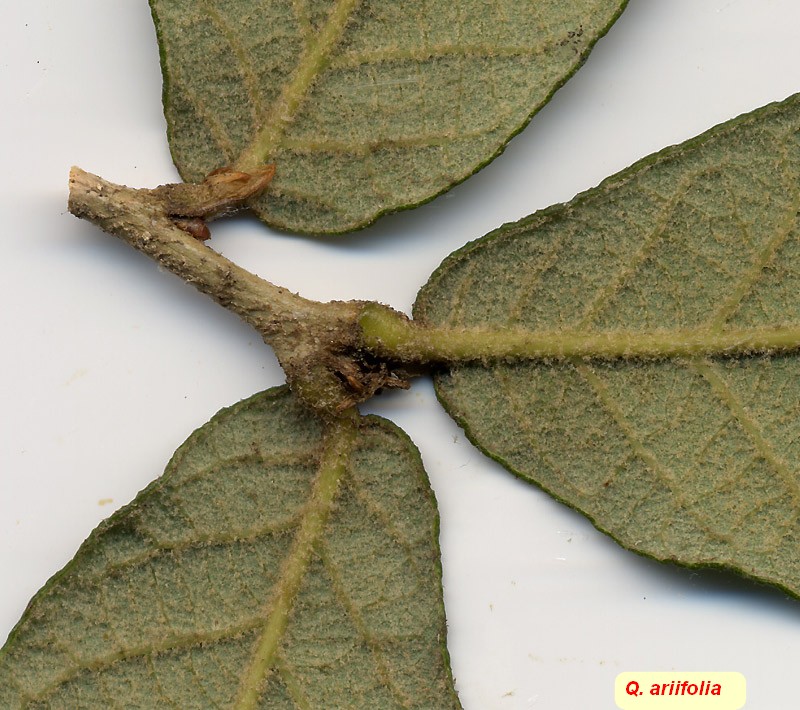| Quercus ariifolia | |
| Author | Trel. 1924 Mem. Nat. Acad. Sci. 20:74, pl. 97. 1924 |
| Synonyms | |
| Local names | |
| Range | Mexico, in the Sierra Madre Oriental (Hidalgo, Nuevo León, Puebla, Queretaro, San Luis Potosi and Veracruz); 1900-2890 m; |
| Growth habit | 7-15 (-20) m ; |
| Leaves |
6-12 cm x 3-7; coriaceous; elliptic to elliptic-oblong, rarely ovate; usually flat abaxially, seldom convex; apex obtuse; base rounded to subcordate; margin revolute, with 2-4 pairs of mucronate teeth in apical half; adaxially dark gree, rugose, glabrous or with fasciculate hairs scattered along midrib; abaxially tomentose, made of light chestnut or whitish fasciculate trichomes, with long crispate rays, and rarely with glandular trichomes; 7-11 veins pairs, ascending, straight or mederately curved, impressed above, prominent beneath; epidermis bullate and papillose; petiole 0.6-1 cm tomentose to glabrescent, with fasciate trichomes; |
| Flowers | in May; |
| Fruits | acorn ovoid to globose, light brown, 1-1.5 cm long, 1 to 2 or more together on a 2-7 cm long pubescent peduncle; included 1/4 to 1/2 in the cup; cup halfround somewhat shallowy, 1.2-1,4 cm high and to 2 cm in diameter, with margin erect, and smooth triangular scales; maturing first year in September and October; |
|
Bark, twigs and |
bark divided into quadrangular plates; twig 2-4 mm thick, grey, tomentose, with pale inconspicuous lenticels; bud ovoid or conical, 2-4 mm long with ciliate, brown scales; stipules 5-7 mm long, persisting at the apex of the twig; |
| Hardiness zone, habitat | oak forest ; |
| Miscellaneous |
-- Sub-Genus Quercus, Section Quercus, Série
Leucomexicanae, Group Reticulatae; |
| Subspecies and varieties |
|
| Pictures |
|




